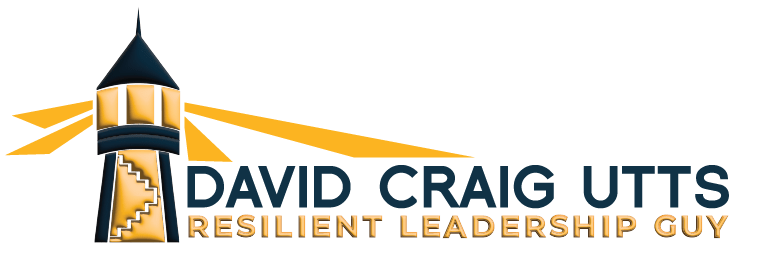Visionaries Break Free From AI

Introduction
Visionaries must challenge AI (Artificial Intelligence)! So, what do I mean by this? Artificial intelligence is all the rage. More and more, it is touching our lives in ways we never imagined. And to be fair, many visionaries are leading in the development of significant AI applications. But this post is not about AI, itself. Instead, this post offers a new point of view around how AI is merely emulating the human experience.
Further, visionaries challenge the existing AI in human beings, transforming how we approach life and take action. And the most successful visionaries are those who engage both greater awareness and creativity so that humanity adopts their solutions. This post also reinforces the challenge most visionaries face in their attempts to turn their vision into reality. It also shares how visionaries must challenge their own “AI” in the process of doing so.
Artifical Intelligence Mirrors the Human Experience
As most know, AI is the capability of a machine to imitate intelligent human behavior. AI is the development of thinking machines that can learn and continuously improve in service of their primary mission. Many including Steven Hawkings, Bill Gates and Elon Musk, have warned of the dangers of AI. They have a concern that future iterations of AI
While their concerns may have validity, my focus is on how AI emulates the routine side of the human experience. And also reflects the potential downside of AI. For example, what we believe creates powerful meaning in our lives. That said, all beliefs are interpretations, not facts. When we powerfully identify with a belief and do not question if it is serving our higher aspirations, our programming is running the show, not the real us.
Human beings are creatures of habit. Habits are automatic ways of thinking and acting that we no longer question. When we follow our unconscious programming blindly; we tend to separate ourselves from others and creative solutions. One could argue that this is a version of AI because it blindly follows its programming but also learns to improve its mission. And to move anything new forward, we must challenge outdated points of view and seek to connect with others to make it manifest. Such investigation takes courage and a willingness to question everything we think to be true. That said, the payoff is enormous when we seek to lead a transformation.
Human Beings at a Turning Point
For example, human beings, at the most basic level, are still operating from an outdated concern for survival that is driven by fear and exasperated by anxiety. Indeed, there is utility in fear. But much of the fear we are dealing with is an unconscious habit. The orientation of such fear goes as far back as when we were facing sabertooth tigers. Because we rarely question this fear, human beings continue to generate protocols that aim to keep them safe. We can see the impact of this in today’s politics. Everyone takes their side and attempts to drive their agenda rather than sitting down, deeply listening to each other and collaborating to solve real problems.
That said, at this stage of human development, we have everything we need to create a secure and prosperous world for all. But to leverage this wealth, we must be willing to come to the table with an open mind. Doing this is requires to focus on systemic problems, have an honest dialogue, and to listen to others who have beliefs counter to us deeply – all in service of resolving the issues we face.
However, the brain and its amazing ability to create habits of perspective
A Business Example
Let’s look at another example of how this unfolds in business. For years, companies had an assembly line mentality that saw human beings as a machine. The sole purpose of the employee was to enhance the profitability of the organization. I believe this foundational view still colors our consciousness. Further, this perspective is a key driver that has led to a decrease in the engagement of the workforce and led to a crisis of leadership in the corporate world. Indeed, business has made efforts to improve engagement and grow leadership. However, most organizations have not challenged the unconscious beliefs that lie behind what’s created the lack of shared participation in creating value.
However, there is a rising chorus of thought leaders who are vigorously challenging this paradigm. The drop in engagement is one of the key reasons why we see a movement growing to humanize the workplace. A new paradigm is beginning to eek in. Conscious Capitalism is one example of an attempt to open a dialogue to shift the paradigm. If you look at the research, the general population is losing its faith in business. However, I do not believe corporations went down this path because they are inherently evil.
All that happened is that corporations fell into the same trap we all do. Because we all fall into the trap of not questioning our habits of thinking and then we keep doing things that don’t support our greatest aims. Just as with AI, when human beings believe in something without questioning it, the organism gets more effective in engaging the belief. As I mentioned above, ALL beliefs are made up. The question must become: is this belief serving what I am aiming to create? Again, AI is only emulating the human tendency of learning to be better at following its protocols.
We systemically reinforce this way of viewing employees through our approach to hiring executives, the lack consciousness we bring to the creation of company cultures and the narrow focus most MBA programs have around training people on the analytical side of running a business. This business example points to the primary role of visionaries which is to break the trance of our habits. When we can break these habits, we create more intelligent solutions.
Visionaries Must Challenge AI
As I have noted in a previous post, visionaries see through the current circumstances. They create solutions that solve most of our most intractable problems. There are countless examples of this. These include the automobile, telephone, penicillin, MRI, internet, and sliced bread. I could go on and on. What’s important to point out is that all of these breakthroughs were generated by visionaries who saw through the current realities to a better world.
All visionaries must deal with the push back that comes from the current AI mindset that is unable to see beyond the current realities. And many times, this leads to the critical influence challenge that most visionaries face. Thus, a core competency that all visionaries must learn is how to enroll others into their view of what’s possible.
To sell others on their ideas, visionaries must:
- Seek to understand, as profoundly as possible, the concerns of those their solution serves.
- Focus their marketing on the problem they are solving, so others can better value the solution they are offering.
- Be consistent in this message, as they grow their network.
And visionaries must also challenge their personal AI if they are to be most creative and to enroll an enthusiastic tribe that helps their solution take root in the world.
Successful Visionaries Break Free from Their Own AI
As I note above, we are creatures of habit. Given that, to enhance their success, a visionary must challenge their patterns of thinking. The central tenant of my “Vision to Reality Breakthrough System” is the development of presence.
When a visionary is present, one primary focus of their attention is on becoming more conscious. Becoming more conscious means that we turn our attention toward our consciousness. Another way of saying this is that we must become more aware of our awareness. When we consciously connect to awareness rather than remaining fixated on thinking, we are learning to take charge of our greatest power. This
After all, without awareness, we would not even know what we are thinking let alone creating! The primary means a conscious visionary deploys to engage their awareness more are:
- Having a daily practice that turns their attention towards awareness. Such practices include meditation, martial arts, Qigong, or being in nature.
- Engaging practices and tools that aid the visionary to understand their nature and habits of thinking better. I have found the Enneagram the most powerful tool for getting more in touch with our true natures.
- Becoming mindful of those circumstances when our AI is triggered so that they can ensure they are not sabotaging their efforts. And there are many ‘mindfulness’ practices that aid us in loosening the grip of tendencies that can sabotage our efforts.
Also, the visionary must create their vision around the impact of their work and reinforce this in their awareness. This practice powerfully engages their subconscious so that it will best support efforts to turn their vision into reality. Above, I have pointed to the importance of challenging our habits. That said, our AI is also a powerful tool at our disposal. The key is to use it well and be continually aware of when it takes us off course.
When the visionary reinforces their personal vision in this way, they are leveraging the power of habit for good. This is because, as their thinking anchors in their vision. As it does this their AI begins to automatically scan the environment for opportunities that are most in alignment with their aspirations. As they are more present for each moment, they can see and seize the opportunities that arise. And this mostly happens on the subconscious level.
Conclusion
The path of the visionary involves breaking us free from outdated and problematic human AI. Visionaries see beyond the current mindset and open up new possibilities. To add velocity to their quest, the visionary must learn to influence the current paradigm by speaking to the problems they are solving more than the solution they offer. And to ensure they become powerful influencers, the visionary must also challenge their perspectives and become more conscious themselves.
About the Author David Craig Utts
Related Posts
Part II: Preserving the Essence of High-Performing Teams Amid a Disruptive, Complex World
The Resilient Edge: Why Today’s Business Executives Must Embrace Self-Awareness, Self-Regulation, and Self-Leadership
Conscious Leaders Continuously Expand Their Presence.
Visionaries Thrive in Creative Tension
The Rise of the Conscious Visionary
Visionaries Unite!
To Lead You Must Claim It!
Transforming Leadership Development
